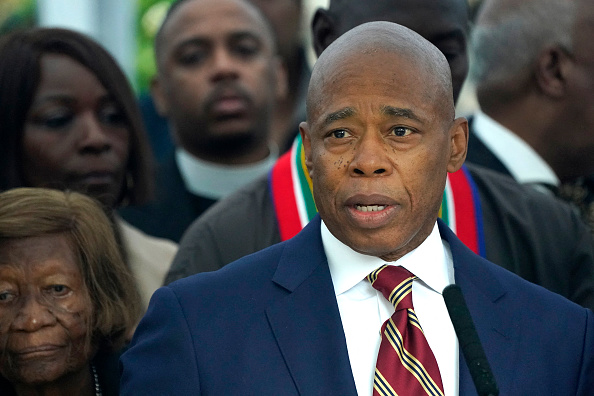On Thursday night, Alan Miller became the second person put to death in Alabama using nitrogen hypoxia. Miller was convicted in the 1999 of killing three men, and this was his second trip to Alabama’s death chamber. The state had previously attempted to execute him by lethal injection in 2022.
With Miller’s death, this country has now executed 1,600 people since the United States Supreme Court revived capital punishment in its 1976 Gregg v. Georgia decision. The Washington Post rightly labeled the 1,600 mark “a grim milestone.”
1,600 executions in 48 years means that we have executed an average of just under 3 people a month. Of course, the pace of executions waxes and wanes. That fact was illustrated just last week when Miller became the fifth person executed in a seven-day period starting on September 20.
Even as we mark Miller’s death, we need to recognize that we have come a long way on the road to abolition in the last several decades. Signs of progress are all around us.
Death sentences and executions have fallen dramatically from their 1990s peak. More states have abolished the death penalty since 2007 than in other comparable period in the nation’s history.
While support for capital punishment grew steadily after Gregg and peaked in 1994, with 80% of Americans saying it was the right punishment for a person convicted of murder, today that number is 53%. Moreover, as Gallup reports, “for the first time since it started asking about the fairness of the death penalty’s application in the U.S., … more Americans say it is applied unfairly (50%) than fairly (47%).”
Still, as Alabama’s determined effort to kill Miller shows, we have a long way to go if we are to see this country rid itself of the curse of state killing. Indeed, as most of the country puts the death penalty in the rearview mirror, the remaining minority of states cling to it ever more tenaciously and seem to be prepared to go to great lengths to keep the machinery of death running.
That was illustrated last week when Missouri executed Marcellus Williams even though the St. Louis County Prosecutor’s Office that originally prosecuted him confessed error. That office joined Williams in seeking to stop the state from killing him.
After the execution, Wesley Bell, the current St. Louis DA, said “Marcellus Williams should be alive today. There were multiple points in the timeline that decisions could have been made that would have spared him the death penalty. If there is even the shadow of a doubt of innocence the death penalty should never be an option. This outcome did not serve the interests of justice.”
The NAACP put it more bluntly. “Tonight,” the group claimed, “Missouri lynched another innocent Black man…. When DNA evidence proves innocence, capital punishment is not justice — it is murder.”
Or to take another example, Richard Glossip sits on Oklahoma’s death row even though Gentner Drummond, the state’s pro-death penalty attorney general, and many other state officials think that he is innocent.
States like Missouri and Oklahoma cling to it as if letting go of the death penalty would mean letting go of their way of life. They would rather push ahead with executions even when there is real doubt about whether those they want to kill deserve to die.
And they are not alone.
Alabama, Texas, and other death belt states seem similarly inclined. Moreover, if Donald Trump returns to the Oval Office, he is sure to launch another execution spree like he did in the last several months of his first term.
The Death Penalty Information Center (DPIC) gets it right when it says that Trump, as well as officials throughout the death belt, “are largely out of step with increasing public concern about the fairness and accuracy of capital punishment—and that zealous approaches to using the death penalty that were once popular are no longer winning the same levels of voter support.”
Indeed, every time they ignore claims of innocence and go ahead with executions, they bring this country closer to the day when Americans, including citizens of their own states, will no longer stand for state killing. And cases like those of Williams and Glossip are hardly unique.
Samuel Gross and his colleagues estimate that more than 4% of death row inmates are actually innocent. We also know that at the same time as this country piled up enough executions to reach the 1,600 mark, over 200 people have been exonerated from death row.
1,600 people executed, 200 exonerated is a national disgrace. Not surprisingly, states that use the death penalty a lot, like Florida, Texas, and Oklahoma lead the way in the number of people proven to have been falsely convicted.
Looking back almost fifty years shows that the problem of false convictions was barely in the field of view. Between 1973 and 1976, only 13 people had been exonerated from death row.
The issue of actual innocence and the risk of executing an innocent person was not a central concern when the Supreme Court temporarily put a halt to executions in Furman v. Georgia or when it gave the green light to resume executions four years later. Indeed, it was barely mentioned in either case.
But it isn’t only that we have learned more about breakdowns in the guilt phase of capital trials since those decisions. We have come to understand much more about the role race plays in the death penalty system.
While the Court recognized that the death penalty seemed to be rife with racial bias, they were stymied in grasping the full dimensions of the problem by the nature of the available evidence. As Justice William Douglas acknowledged in a footnote to his Furman opinion, even the best research could not rule out the effect of “a host of factors other than race” in explaining apparent racial discrimination in death cases.
“It is not possible,” Douglas explained, “to indict the judicial and other public processes prior to the death row as responsible for the association between Negroes and higher frequency of executions…. Too many unknown or presently immeasurable factors prevent our making definitive statements about the relationship.”
And then along came David Baldus to provide exactly what Douglas was calling for in Furman. Baldus examined over 2,000 post-Gregg death cases in Georgia using sophisticated statistical techniques. He showed powerful race-of-the-victim effects that explained disparate sentencing in death cases controlling for 230 variables.
So good was his research that even the Supreme Court did not dispute its validity.
Since Baldus did his work, we have learned that the effect of race doesn’t end when the sentence is handed down. Other studies have shown that Blacks are more likely to be executed and to have their executions botched.
Indeed since 1976, this country has witnessed a cascade of botched executions of defendants of every race. The problem became so bad that the DPIC called 2022 “the year of the botched execution” because things went wrong in seven of that year’s twenty executions (35%).
Talse convictions, racial biases, and botched executions are inescapable. They are as much features as bugs in America’s death penalty system.
That is why even the most ardently pro-death penalty jurisdictions will one day have to grapple with those facts. Their effort to shunt them aside and push the number of executions ever higher is, to paraphrase former Supreme Court Justice Harry Blackmun, “plainly doomed to failure.”
While we cannot say exactly when, someday states like Alabama, Missouri, Oklahoma, and Texas will reach the same conclusion that Blackmun foresaw, namely that “the death penalty … must be abandoned altogether.”
#Week #America #Carried #1600th #Execution #Madness #Stop #Austin #Sarat #Verdict










